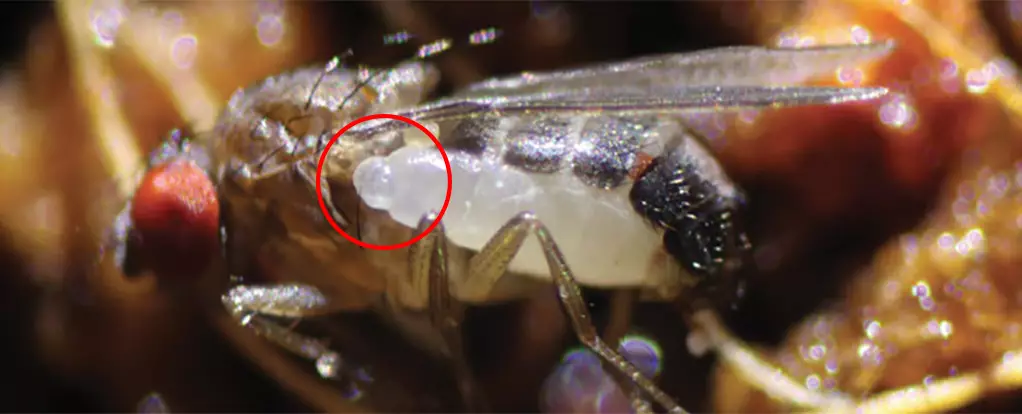In an astonishing revelation, a team of biologists has uncovered a strikingly unique wasp species living in an unexpected environment: the abdomen of adult fruit flies. This newly identified insect, dubbed *Syntretus perlmani*, has sparked intrigue due to its peculiar life cycle, one that diverges from the typical behaviors of other parasitoid wasps. Unlike its relatives, which often target juvenile insects, this wasp exhibits a bizarre preference for the adult stage of *Drosophila* flies—an interaction rarely documented in the insect kingdom.
The discovery hinges on the remarkable adaptability of insects within the parasitoid world, where the intricate predator-prey choreography unfolds. While many wasps and parasitoids target young or immature hosts, the bizarre choice of *Syntretus perlmani* to inhabit full-grown fruit flies presents a compelling case for evolutionary divergence. It raises important questions about ecological niches and evolutionary strategies in parasitism.
The endeavor to uncover this species started back in March 2023, in the seemingly benign settings of Mississippi’s backyards. The researchers were initially focused on studying nematode infections in flies but serendipitously stumbled upon a wasp larva nestled within an adult male fruit fly. This discovery was not just serendipitous; it sparked a year-long investigation into the life and reproduction of this strange wasp.
In total, the team meticulously examined over 6,000 male fruit flies from various regions including Mississippi, Alabama, and North Carolina, searching for evidence of the wasp larva. Their findings were minimal yet alarming—only about 1 percent of the specimens exhibited signs of the wasp infestation, indicating a location-specific life cycle intertwined with the behavior of its fly hosts.
Upon encountering a suitable host, the larva of *Syntretus perlmani* finds itself in a highly controlled environment, leveraging the bodily resources of the adult fly. After approximately 18 days, the larva initiates a dramatic exit from its host, reminiscent of a sci-fi horror film trope, as it chews its way through the fly’s abdomen.
This process raises fascinating questions about the physiological effects on the host. How does the adult fruit fly manage to maintain its activity level during the larva’s development, and what immune defenses are compromised in the face of such parasitic invasion? Understanding these dynamics could offer insights into host-parasite interactions, particularly how adult flies mitigate cellular immune responses that would naturally target encroaching invaders.
The rapid reproductive cycle of the female wasp post-emergence underscores a relentless drive to perpetuate its species, with females laying eggs mere hours after leaving their cocoons. This behavior hints at an evolutionary advantage of targeting adults, potentially reducing competition from other parasitic species and exploiting less resistant hosts.
The implications of this discovery extend into the realm of biological research. The ability to easily collect these wasps from common backyard fruit fly traps presents a new opportunity for biologists. As noted in the research, the connection between this novel wasp and the widely-studied *Drosophila melanogaster* opens avenues for exploring fundamental aspects of immunity, ecology, and evolution.
This new wasp species not only raises the profile of less-studied parasitoids but also emphasizes the continuously evolving dynamics of parasitism and host relationships. Each revelation in this field contributes to a broader understanding of ecosystems, biological interactions, and evolutionary adaptations. The comprehensive nature of this study, combined with the host’s ubiquitous presence, makes *Syntretus perlmani* a potentially invaluable tool for future biological explorations.
The discovery of *Syntretus perlmani* is not just a fascinating footnote in entomological research; it is a significant addition to the narrative of how different species adapt and evolve within their environments. Each aspect, from its surprising habitat choice to the implications for future scientific inquiry, underscores the importance of continued exploration in understanding the complexities of life on Earth.

Leave a Reply